
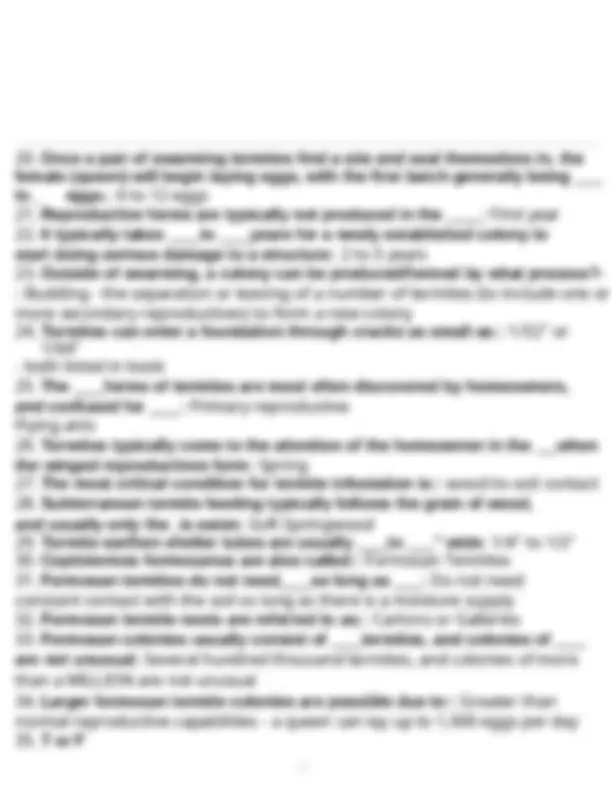
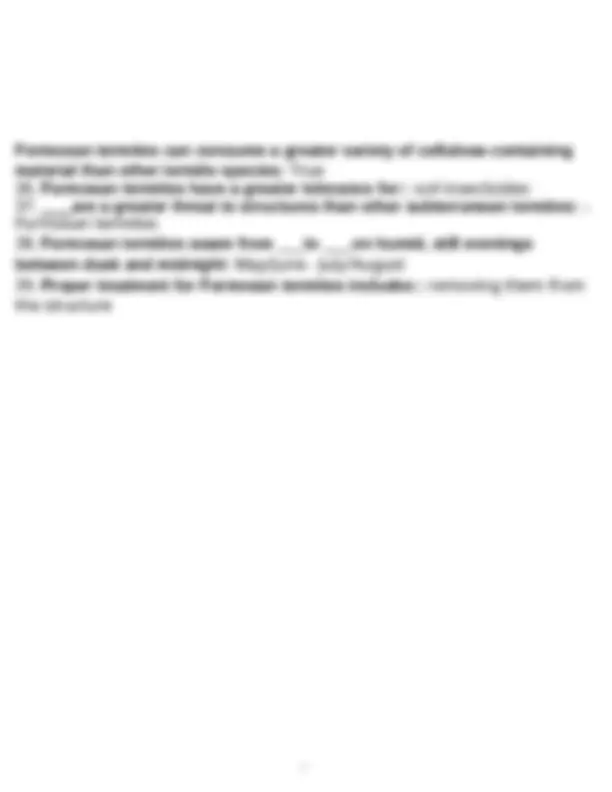
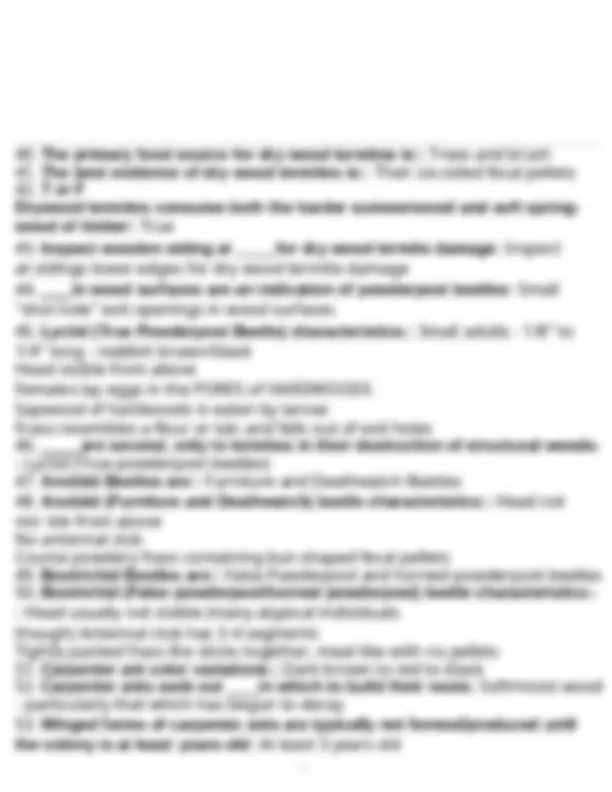
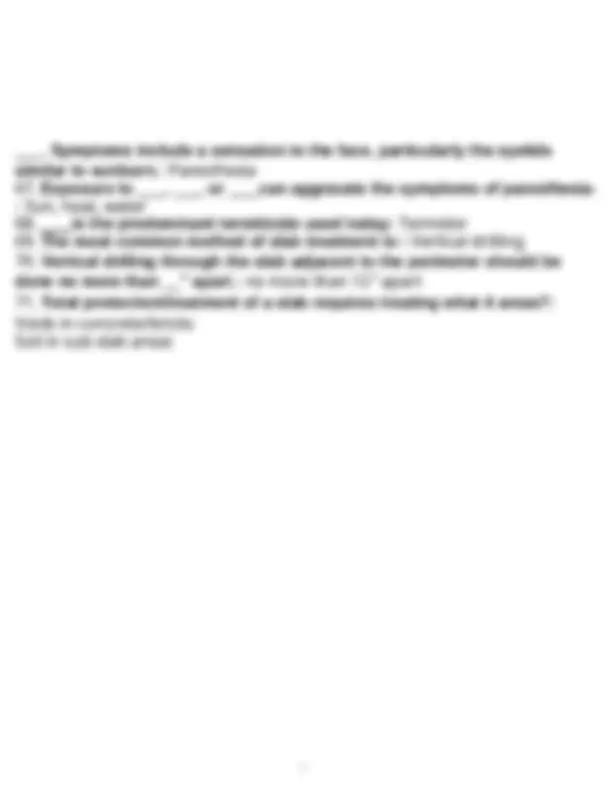
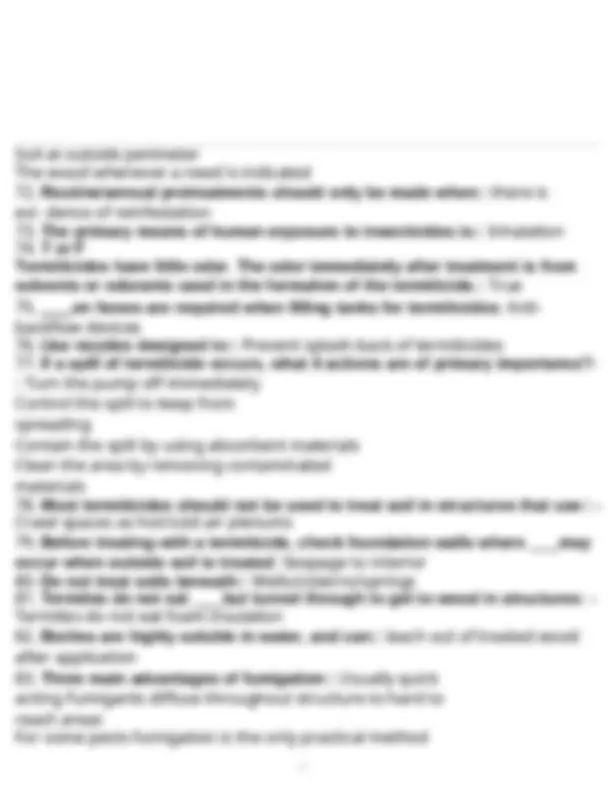
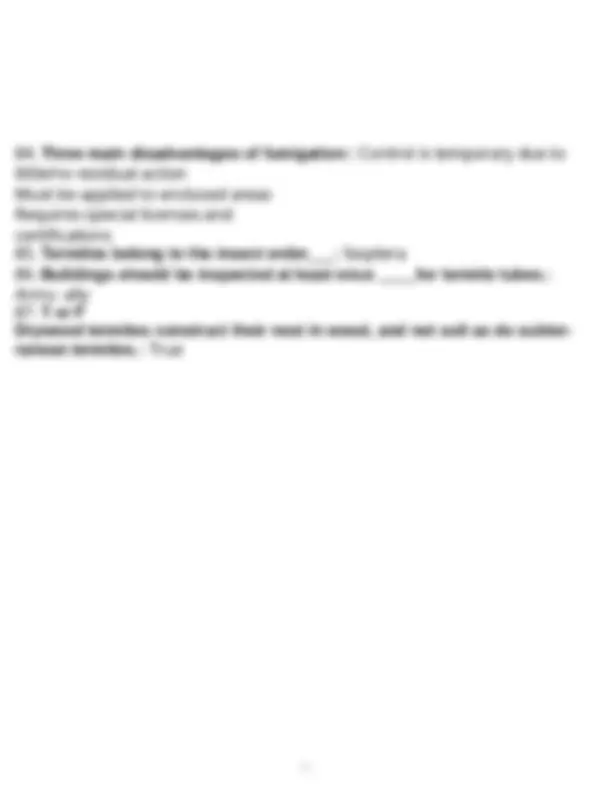
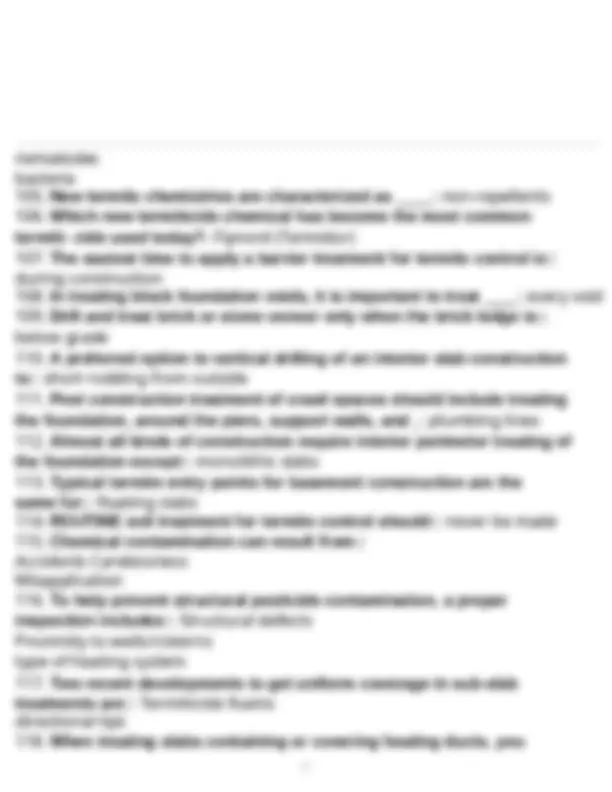
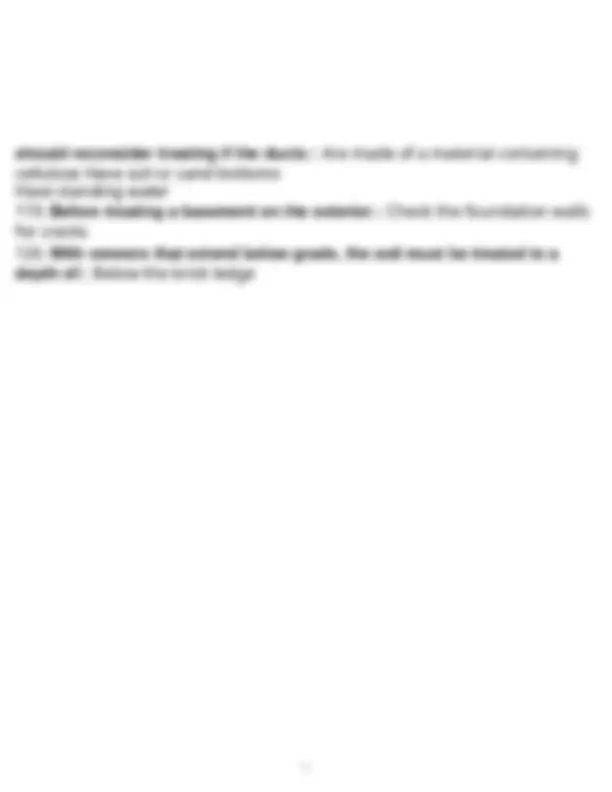
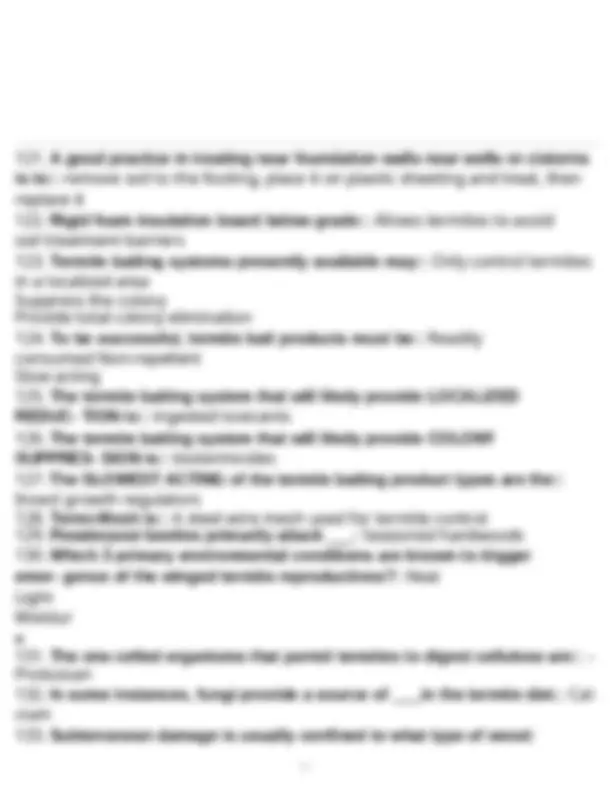


Study with the several resources on Docsity

Earn points by helping other students or get them with a premium plan


Prepare for your exams
Study with the several resources on Docsity

Earn points to download
Earn points by helping other students or get them with a premium plan
Community
Ask the community for help and clear up your study doubts
Discover the best universities in your country according to Docsity users
Free resources
Download our free guides on studying techniques, anxiety management strategies, and thesis advice from Docsity tutors
Texas Termite Technician Questions with Answers
Typology: Exams
1 / 17

This page cannot be seen from the preview
Don't miss anything!










1 /
2 / queen die Part of the colony becomes separated from the main colony
4 / Formosan termites can consume a greater variety of cellulose-containing material than other termite species: True
5 /
7 / wood in contact with soil wood adjacent to dirt-filled slab porches firewood piled in garages or next to houses
8 /
. Symptoms include a sensation to the face, particularly the eyelids similar to sunburn.: Paresthesia
10 /
11 /
13 / nematodes bacteria
14 / should reconsider treating if the ducts:: Are made of a material containing cellulose Have soil or sand bottoms Have standing water
16 / Soft Springwood
17 /